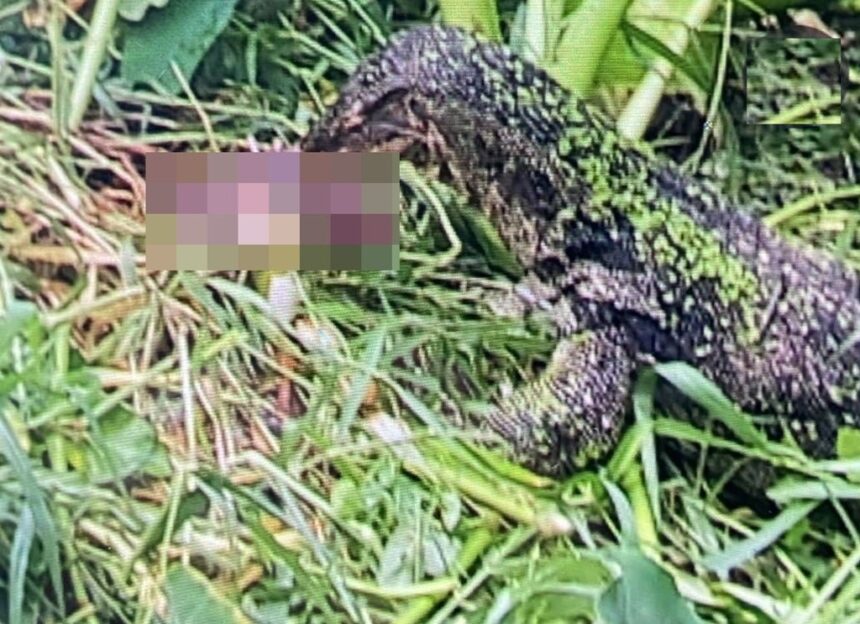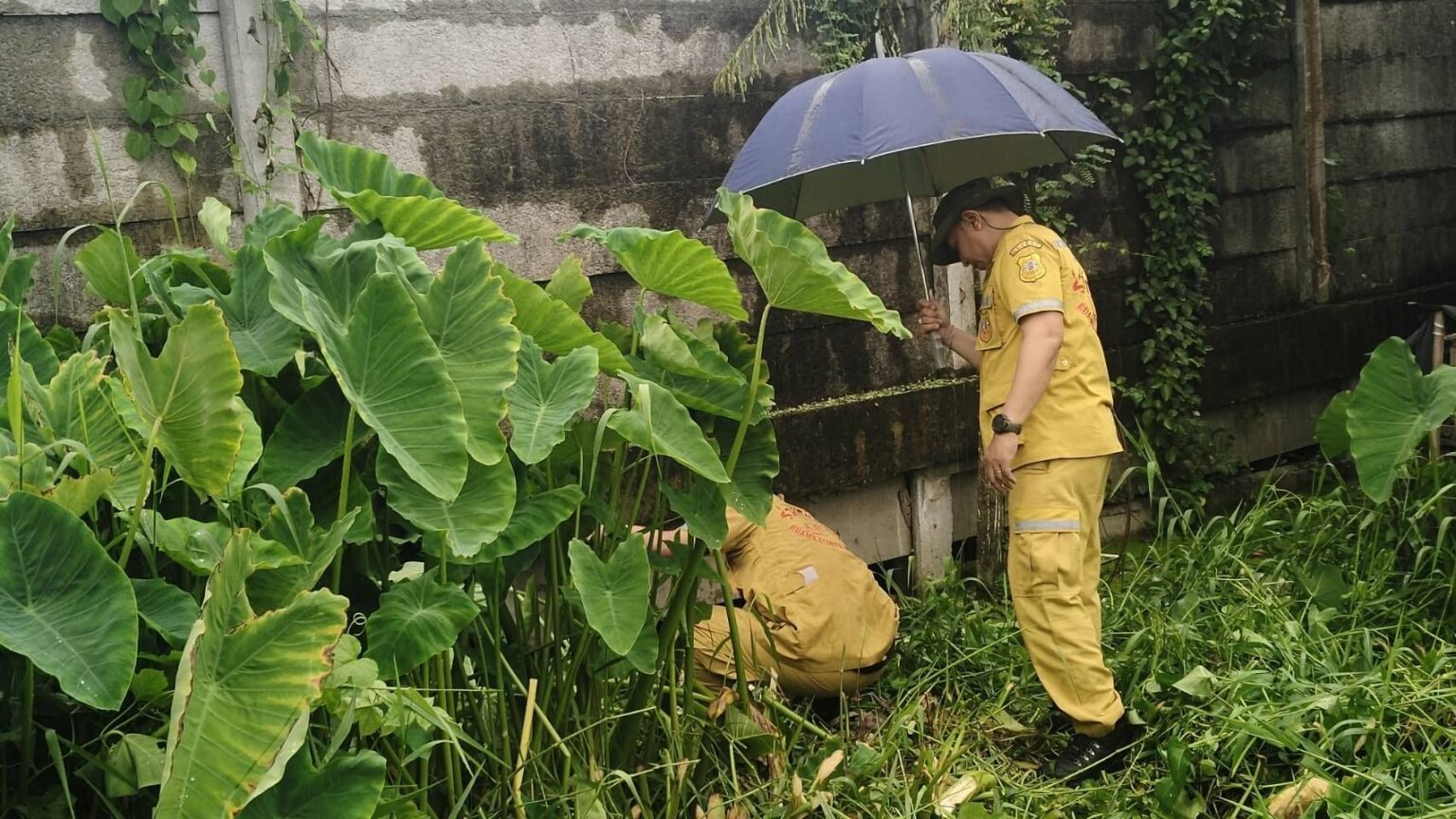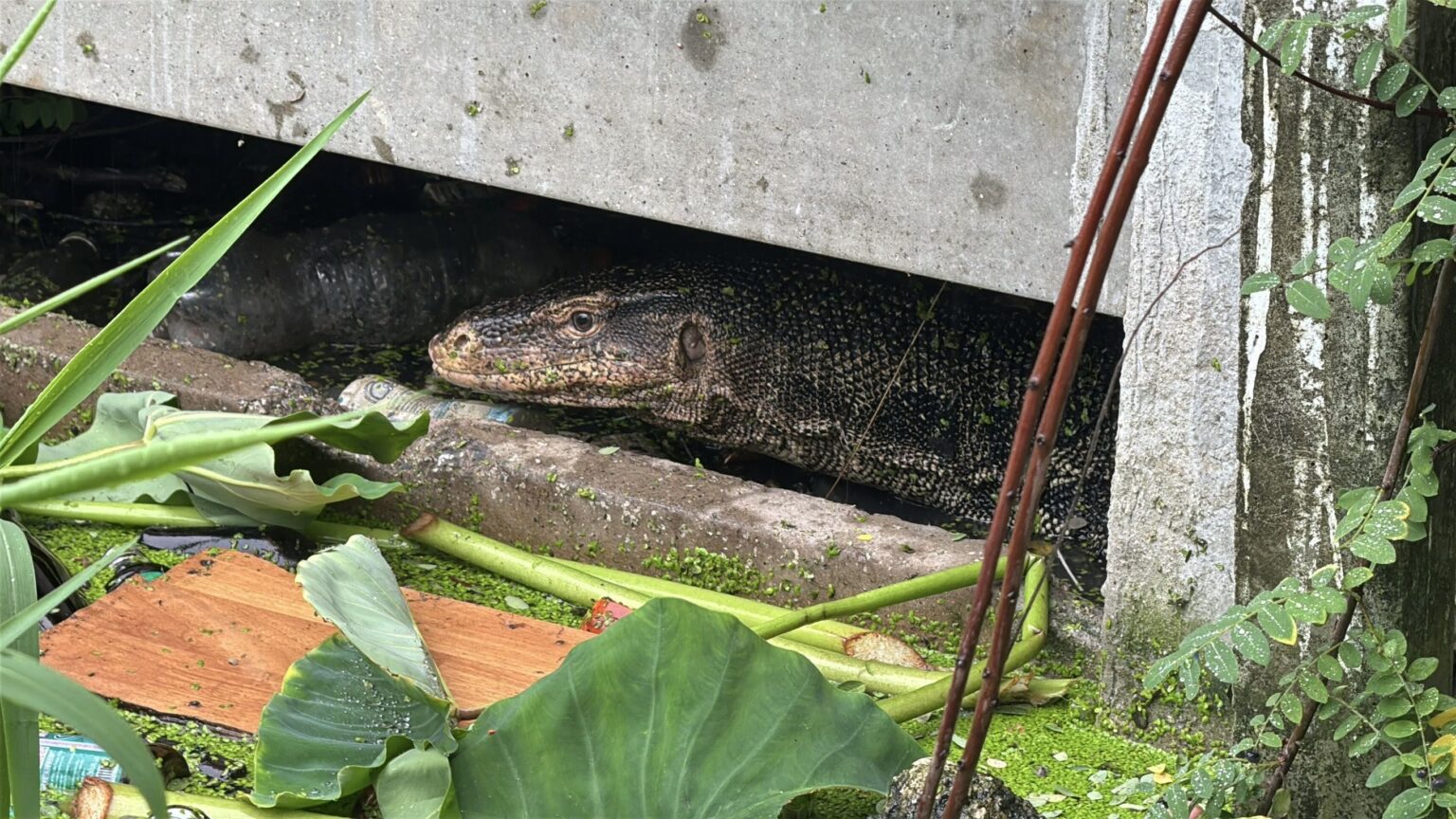BANGKOK – Residents in the King Kaew 28 area of Samut Prakan were left shaken after a monitor lizard was seen dragging what appeared to be the body of a newborn into the water before gnawing on it in a patch of grass. People living nearby said there are many monitor lizards in the area, and some have bitten children in the past.
At around 12:30pm on 14 May, Bang Kaew Police received a call from worried locals. They reported a large monitor lizard carrying the remains of a baby in its mouth, out in the open behind King Kaew 28 in Racha Thewa, Bang Phli District.
Police and rescue workers arrived quickly. They found a body that looked like a newborn. The remains had a head and torso but were missing both arms and legs. There were no clothes on the body.
Officers could not immediately tell the sex of the baby, but they believed the age to be roughly 8-9 months in the womb. The cause of death was not clear, and the body was sent to the hospital for a full examination.
One resident described hearing strange noises outside while resting in their room. When they went out to look, they were horrified to see a monitor lizard with what looked like a baby’s body in its mouth. The resident called for family members to help chase the lizard away.
When they returned, the lizard dragged the remains into the grass but refused to leave the area. The resident took photos and called the police immediately.
Police secured the area to collect more evidence. They plan to send the body to the hospital for a post-mortem to find out how the baby died. The investigation is now focused on finding the baby’s mother and learning what happened.
The incident has left the community shaken, especially with reports of these lizards having attacked children before. Police are working quickly to get answers.
Thailand’s Monitor Lizard
The monitor lizard in Thailand is primarily the Asian water monitor (Varanus salvator), one of the largest lizard species in the world, second only to the Komodo dragon. It can grow up to 2–3 meters (6.5–10 feet) long and weigh 20–90 kg, with males typically larger than females.
It can be found near water sources like rivers, lakes, swamps, canals, and mangroves. Common in both rural and urban areas, including Bangkok’s parks and sewers. They are semi-aquatic, excellent swimmers, and fast runners.
They are shy, avoiding humans unless threatened, and are opportunistic carnivores, eating fish, rodents, birds, eggs, carrion, and even human food waste.
In Thai, the monitor lizard is called hia, a term doubling as a strong insult, reflecting negative cultural views. Some believe seeing one brings bad luck, associating them with cemeteries or carrion. Others see them as good luck if they enter homes.
Monitor lizards help control pest populations (e.g., rats) and clean up carrion, maintaining ecosystem balance. However, they can be a nuisance to farmers by stealing chickens or eggs, earning nicknames like “chicken eater.”

















